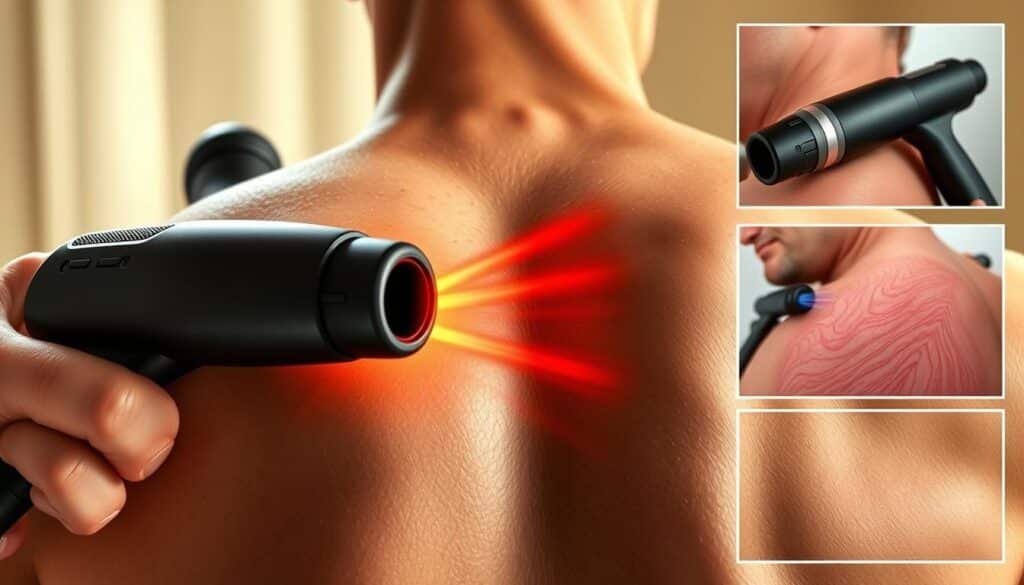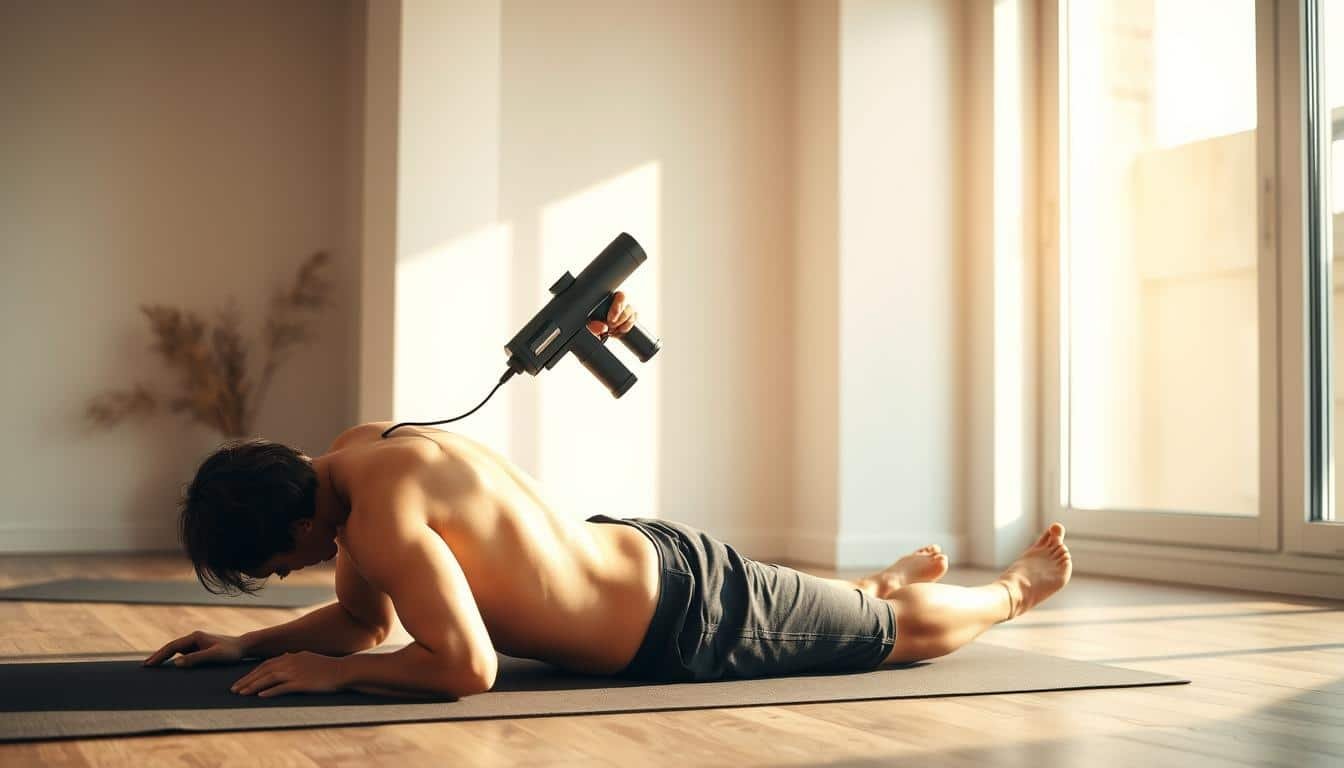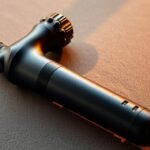We’ve all been there: that moment when your shoulders feel like they’re hosting a rock-climbing convention, and your lower back could double as a medieval torture device. Enter the percussion therapy tool that’s flipping the script on muscle relief. Picture this—a friend once spent weeks complaining about stiffness until they discovered a simple truth: using the right technique turns these devices from noisy gadgets into back-saving superheroes.
This guide isn’t just about zapping tension—it’s about smart, science-backed strategies. We’ll explore why percussive therapy works wonders for tight muscles, from boosting blood flow to dissolving knots that think they own real estate in your spine. Ever wondered why some folks swear by their sessions while others end up sore? Spoiler: It’s all about angles, pressure, and knowing when to quit.
You’ll learn to navigate attachments like a pro—because that bullet head isn’t just for show. We’re also tackling the biggest blunders people make (hello, overenthusiastic speed settings) and how to avoid turning self-care into a cautionary tale. By the end, you’ll wield your device with the confidence of a seasoned therapist—minus the fancy license.
Key Takeaways
- Percussion therapy improves circulation and breaks up muscle knots effectively
- Proper technique prevents injury and maximizes relaxation benefits
- Attachment selection impacts results for different back areas
- Overuse can worsen discomfort—moderation is key
- Targeted sessions address specific tension points safely
- Recognizing when to consult a professional ensures long-term wellness
Introduction to Massage Guns and Back Relief
Modern life comes with a silent protest written in tight shoulders and stiff spines. While our ancestors chased prey or farmed fields, we’ve traded physical labor for screen-staring marathons—and our bodies are filing complaints.
Understanding Back Muscle Tension
Desk posture transforms spines into question marks. Phones turn necks into crane arms. Stress? It’s the invisible backpack we never take off. These modern habits create muscle lockdowns that even yoga can’t always unlock.
| Causes | Effects | Solutions |
|---|---|---|
| Slouched sitting | Upper back knots | Ergonomic adjustments |
| Stress accumulation | Lower back stiffness | Mindfulness practices |
| Sedentary lifestyle | Reduced flexibility | Targeted movement breaks |
Fight-or-flight mode isn’t just for bear attacks. Daily stressors keep muscles in permanent defense mode. The result? A back that feels like over-tightened guitar strings.
The Role of Percussive Therapy in Recovery
Enter the rapid-fire rhythm of modern recovery tools. These devices don’t just rub surfaces—they send Morse code messages through muscle layers. Think of it as rebooting your body’s tension software.
The science is simple: rapid pulses boost blood flow like caffeine for capillaries. They break up stubborn adhesions—those biological glue spots binding muscle fibers. It’s not magic, just physics meeting physiology.
Regular sessions teach muscles new relaxation habits. Unlike foam rollers that quit at surface level, percussive tools reach deep tissue real estate. The best part? You can evict tension squatters without leaving your couch.
Benefits of Massage Guns for Muscle Recovery

Ever felt like your muscles are staging a mutiny after leg day? Modern recovery tools act as skilled negotiators in these biological standoffs. Let’s explore why these devices have become the MVP of muscle rehabilitation.
Reduction in Muscle Tension and Soreness
Percussive therapy works like a molecular wrecking ball. It disrupts the chemical handcuffs that bind muscle fibers, releasing stored tension. Think of it as decluttering your body’s storage unit—without the rental fees.
Studies show regular sessions reduce soreness by 30-50%. The secret? Rapid pulses trigger natural painkillers called endorphins. Your body’s pharmacy just got a 24/7 delivery service.
| Method | Tension Reduction | Time Efficiency |
|---|---|---|
| Foam Rolling | 25% | 15 mins |
| Stretching | 18% | 20 mins |
| Massage Guns | 47% | 5 mins |
Improved Circulation and Flexibility
Blood flow gets turbocharged during sessions. One user described it as “spring cleaning for capillaries.” Enhanced circulation means nutrients arrive faster while metabolic trash gets evicted promptly.
Flexibility gains come from breaking up fascial adhesions—those biological duct tapes limiting movement. Over weeks, users report reaching toes they haven’t met since middle school gym class.
“My yoga mat collects less dust since incorporating percussive therapy—warrior pose finally feels victorious.”
Remember: Consistency beats intensity. Three 10-minute weekly sessions outperform marathon weekend recovery attempts. Your muscles prefer steady relationships over chaotic flings.
Expert Tips on How to Use Massage Gun on Back
Mastering percussive therapy requires more than enthusiasm—it demands strategy. We’ve seen countless users transform from frustrated first-timers to recovery ninjas by following these battle-tested methods. The difference between relief and regret often lies in three crucial elements.
Start with Low-Speed Settings
Think of your device as a sports car—nobody floors the accelerator in a parking garage. Low-intensity modes act as your muscle’s “hello handshake” before deeper engagement. Ramp up speeds only after tissues acclimate, like gradually turning a dimmer switch instead of blinding yourself with full brightness.
Apply Light Pressure for Optimal Relief
These tools aren’t thumb wars—you shouldn’t wrestle them into submission. Hold the attachment flush against skin without digging. Pro tip: Imagine balancing a raw egg between the head and your shoulder blade. That featherlight touch activates receptors without bruising egos (or capillaries).
Avoid Direct Contact with Bony Areas
Your spine isn’t a drumline audition. Focus on meaty regions flanking the vertebrae—those paravertebral muscles craving attention. Two-minute sessions per zone prevent tissue rebellion. For unreachable spots? Swallow pride, recruit a helper. Contortionists belong in circuses, not recovery routines.
“Treat your first sessions like first dates—listen more than you push.”
Remember: Percussive therapy rewards patience. Clock your sessions, respect anatomical boundaries, and let science do the heavy lifting. Your future supple self will thank you.
Techniques and Best Practices for Safe Use
Navigating recovery tools requires equal parts enthusiasm and street smarts. We’ve seen more near-misses than a toddler with glitter glue—safety isn’t sexy, but neither are ER selfies.
Posture Matters More Than Power
Stand like a palm tree, not a question mark. Keep knees slightly bent and shoulders relaxed. Move the device in slow, deliberate strokes—racing through sessions invites trouble. Pro tip: Pretend you’re spreading peanut butter on toast, not scrubbing graffiti off subway walls.
Time Management Beats Heroics
Limit sessions to 2 minutes per muscle group. Sensitive zones like the neck’s front demand extra caution—arteries and nerves aren’t fans of surprise parties. Bruised skin? Let it heal before playing percussionist.
Start low, go slow. Our team recommends beginning with intensity level 1, even if your inner gym bro protests. Pair these strategies for leg muscle recovery with back techniques for full-body care. When discomfort whispers, listen—it’s smarter than your ego.












